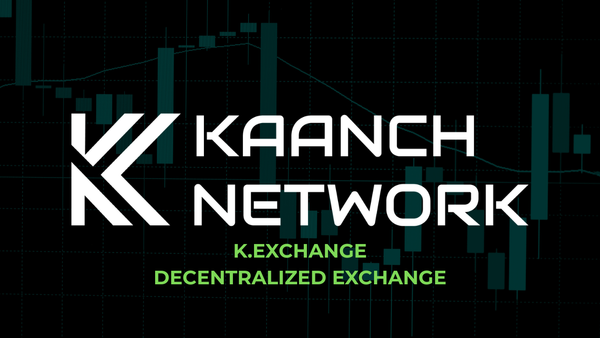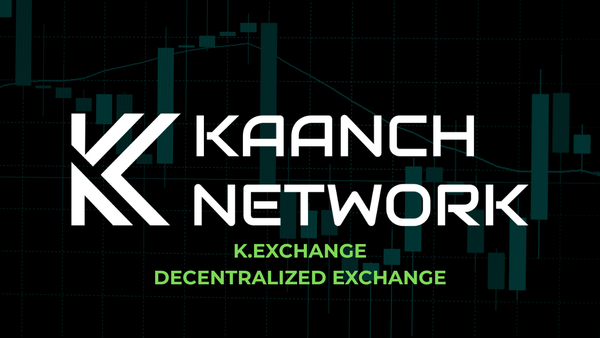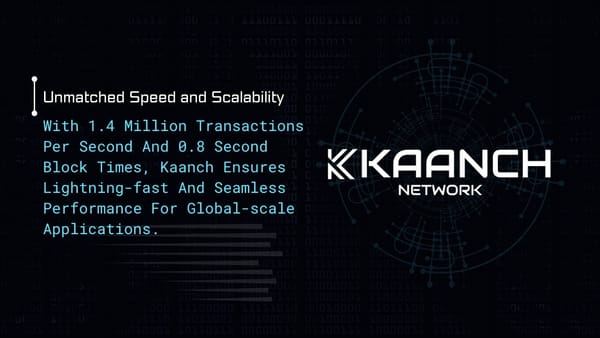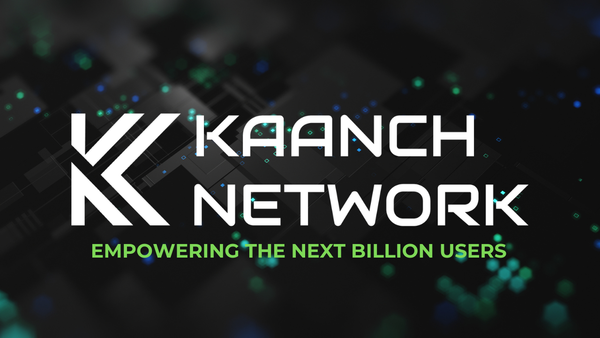Revolutionizing Blockchain: How Kaanch Network Achieves 1.4 Million TPS
Kaanch Network achieves 1.4 million TPS with advanced DPoS, dynamic sharding, and asynchronous processing. It delivers near-instant transactions, near-zero gas fees, and unmatched scalability while maintaining decentralization and security. Transforming blockchain for DeFi and enterprise solutions.
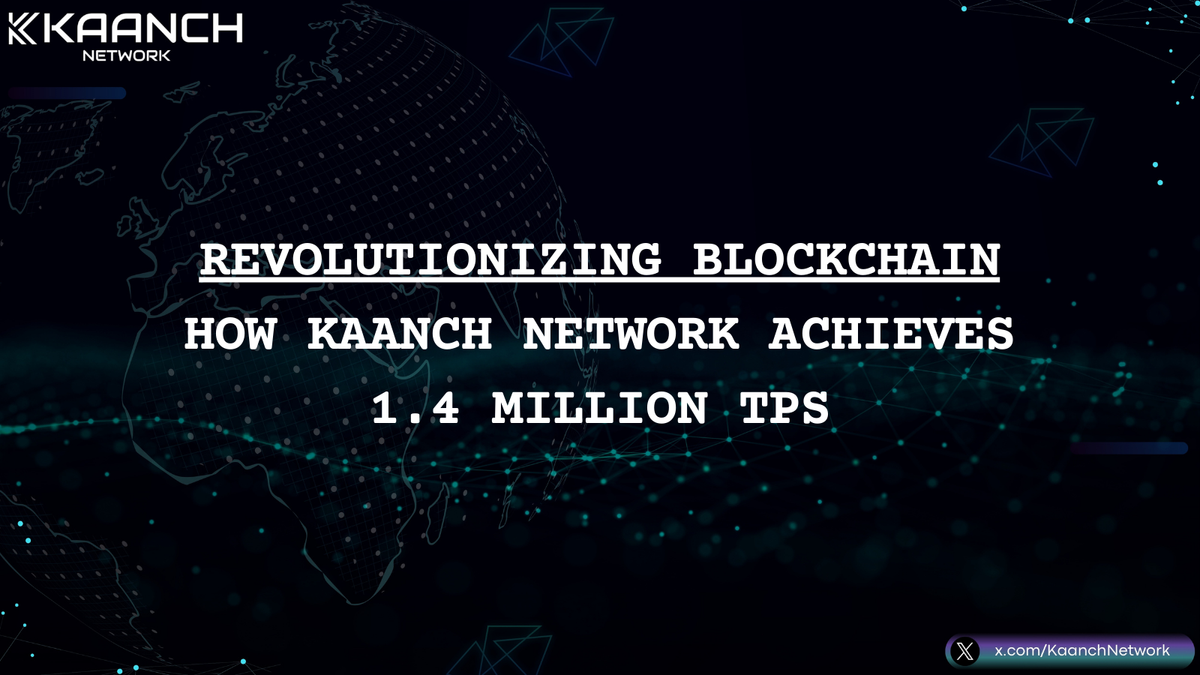
The blockchain landscape has witnessed immense growth over the past decade. However, many networks still struggle to balance scalability, speed, and decentralization. Kaanch Network sets a new benchmark by achieving 1.4 million transactions per second (TPS) while maintaining robust security, low costs, and decentralization. This blog explores how Kaanch Network’s unique technological architecture makes this feat possible, with a detailed breakdown of the innovative mechanisms that power it.
The Blockchain Scalability Dilemma
Most blockchains face a trade-off between scalability, decentralization, and security, commonly referred to as the blockchain trilemma. Networks like Bitcoin and Ethereum process only 7 TPS and 30 TPS respectively, leading to congestion, slow transaction speeds, and high fees during peak activity.
Kaanch Network resolves these challenges with a Delegated Proof of Stake (DPoS) mechanism, advanced sharding, asynchronous processing, and optimized node communication.
How Kaanch Network Achieves 1.4 Million TPS
1. Delegated Proof of Stake (DPoS)
Kaanch Network employs an enhanced version of DPoS to achieve high throughput without compromising decentralization or security. Here's how it works:
- Election of Validators: Token holders vote for a limited set of validators responsible for transaction validation and block creation. Kaanch Network currently operates with 3600 active validators.
- Batch Processing: Validators process multiple transactions simultaneously, bundling them into a single block.
- Parallel Validation: By delegating responsibility across multiple validators, transactions are processed in parallel, significantly boosting speed.
Formula for DPoS Efficiency:

With Kaanch’s dynamic sharding and parallel processing, the network achieves up to 1.4 million TPS.
2. Dynamic Sharding
Sharding divides the blockchain into smaller, independent units called shards. Each shard processes its own set of transactions, enabling multiple transactions to occur simultaneously.
- Dynamic Scaling: Kaanch’s shards are dynamically allocated based on network load. This prevents underutilization and ensures optimal performance even during peak usage.
- Inter-Shard Communication: A lightweight communication protocol ensures seamless interaction between shards, maintaining consistency across the network.
3. Asynchronous Processing
Traditional blockchains use synchronous processing, where transactions are validated sequentially. Kaanch Network employs asynchronous processing, allowing nodes to process multiple transactions concurrently.
- Low Latency: Transactions are validated almost instantly, reducing bottlenecks and improving user experience.
- Throughput Optimization: Asynchronous processing ensures that no node remains idle, maximizing resource utilization.
4. High-Performance Node Architecture
The network's nodes are optimized for speed and scalability using advanced techniques such as:
- Data Compression: Reduces the size of transaction data, speeding up validation and propagation.
- Efficient Memory Management: Ensures smooth operation even with high transaction volumes.
- Optimized Communication Protocols: Minimizes latency between nodes, improving network synchronization.
Visualizing DPoS Efficiency with Kaanch Network
Here’s how Kaanch Network’s DPoS operates compared to traditional Proof of Stake (PoS) systems:
| Feature | Traditional PoS | Kaanch’s DPoS |
|---|---|---|
| Number of Validators | Variable, often < 100 | 3600 active validators |
| Transaction Validation | Sequential | Parallel |
| Block Time | ~10 seconds | ~0.8 seconds |
| TPS | < 100,000 | Up to 1.4 million |
DPoS Workflow Diagram
[Token Holders] ---> [Vote for Validators]
↓ ↓
[3600 Validators] ---> [Parallel Transaction Processing]
↓ ↓
[Shards] ---> [Inter-Shard Communication] ---> [Blockchain Consensus]
Benefits of Kaanch Network’s Architecture
- Unparalleled Speed
With a block time of 0.8 seconds and parallel validation, Kaanch Network ensures near-instantaneous transaction processing. - Scalability Without Bottlenecks
Dynamic sharding and asynchronous processing prevent congestion, even during peak usage. - Cost Efficiency
Near-zero gas fees make Kaanch Network ideal for both retail and enterprise users. - Decentralization and Security
The DPoS mechanism ensures decentralization while maintaining robust security with thousands of validators.
Real-World Use Cases
- DeFi Applications
Instant, low-cost transactions make Kaanch Network perfect for swaps, staking, and liquidity pools. - Enterprise Blockchain Solutions
Enterprises can utilize Kaanch for high-frequency data sharing and supply chain management without compromising speed or cost. - Banking the Unbanked
Kaanch provides secure, low-cost financial services for individuals without access to traditional banking, empowering global financial inclusion.
The Future of Blockchain
As blockchain technology matures, the demand for scalable, secure, and cost-efficient networks will continue to grow. Kaanch Network is at the forefront of this evolution, setting new standards with its 1.4 million TPS capability.
By resolving the blockchain trilemma, Kaanch Network is not just building a blockchain—it’s building the foundation for the next generation of decentralized applications and services.
Join the Revolution
Explore how Kaanch Network can transform your blockchain experience. Visit us at www.kaanch.com to learn more.

